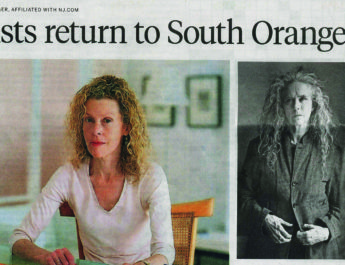PANEL: Montclair Art Museum 10/22/15
EXHIBITION: Pierro Gallery 10/29/15
3 ONE ACTS: SOPAC 11/08/15
Moderator:
Dan Bischoff, Art Critic
Panel:
Joseph Jacobs, Art Historian, Curator
Svetlana Mintcheva, National Coalition Against Censorship
Dread Scott, Artist
The first of three programs examining arts and controvery, The Montclair Art Museum and The Lennie Pierro Memorial Arts Foundation present this distinguished panel to discuss the issues and concerns that arise in the creation of public artinstallations and how they engage communities in dialogue.
Art in the Public Eye: A Panel Discussion is made possible, in part, by a grant from the New Jersey
Council for the Humanities, a state partner of the National Endowment for the Humanities. Any views,
findings, conclusions or recommendations expressed in this panel do not necessarily represent those
of the National Endowment for the Humanities or the New Jersey Council for the Humanities.
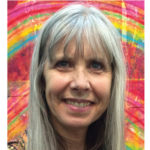 Judy Wukitsch President of The Lennie Pierro Memorial Arts Foundation The Lennie Pierro Memorial Arts Foundation, founded in 2002, continues to foster public engagement of art through a wide variety of annual programming. Our goal is to make exposure to art accessible to all, for the benefit of the health and vitality of the individual as well as the community. This year, inspired by our own encounters with art that stirs controversy or critical attack, and the questions that are raised, we focus on public art, public perceptions, and the notion of responsibility and “ownership” of public spaces. ART IN THE PUBLIC EYE is a series of three programs: tonight’s panel discussion; an exhibition at Pierro Gallery of South Orange which opens on October 29, and a reading of three, specially commissioned one act plays at South Orange Performing Arts Center on November 8 — all exploring our topic. Beginning with this panel, we open a dialogue about the validity of art — public art in particular — especially when it is subjected to public scrutiny, and sometimes, political posturing. These issues are faced by our communities when art is confronted in the public arena. They can influence the artist, possible funders, the hosts, and the public. Through valuable debate, we will explore how this effects the future of public art which we believe enhances and strengthens our communities.
Judy Wukitsch President of The Lennie Pierro Memorial Arts Foundation The Lennie Pierro Memorial Arts Foundation, founded in 2002, continues to foster public engagement of art through a wide variety of annual programming. Our goal is to make exposure to art accessible to all, for the benefit of the health and vitality of the individual as well as the community. This year, inspired by our own encounters with art that stirs controversy or critical attack, and the questions that are raised, we focus on public art, public perceptions, and the notion of responsibility and “ownership” of public spaces. ART IN THE PUBLIC EYE is a series of three programs: tonight’s panel discussion; an exhibition at Pierro Gallery of South Orange which opens on October 29, and a reading of three, specially commissioned one act plays at South Orange Performing Arts Center on November 8 — all exploring our topic. Beginning with this panel, we open a dialogue about the validity of art — public art in particular — especially when it is subjected to public scrutiny, and sometimes, political posturing. These issues are faced by our communities when art is confronted in the public arena. They can influence the artist, possible funders, the hosts, and the public. Through valuable debate, we will explore how this effects the future of public art which we believe enhances and strengthens our communities.
We welcome the Montclair Art Museum as a partner in presenting this panel discussion and thank them for their support. And we hope to see you at the other events which further explore this topic. Please visit pierrofoundation.org or our Lennie Pierro Memorial Arts Foundation Facebook page for more information.
INTRODUCTION
 Dan Bischoff The undulating history of contemporary art controversy, which peaked after Pat Buchanan’s declaration of “culture war” on the National Endowment for the Arts at the 1992 Republican National Convention and, at least for most of the public, has been slowly subsiding ever since, or so it would seem. The wars haven’t entirely disappeared — the caution of museum administrations is more profound now, and budgets for public art around the country have taken a severe cut in the past 30 years that may never be restored. The categories of art that can cause controversy were expanded from nudity (a perennial) to religious and gay themes, and then to 9/11 and certain political subjects. The theory of “Transgressive art-making” from the 1960s began to seem very distant. And yet art has passed through the eye of anti-gay and pro-war outrage and now routinely celebrates both themes, as well as a host of ethnic, cultural, and aesthetic identities far outside any previous North American norm —and much of the outrage over offending art has begun to come from the other side of politics. Art that intentionally courts controversy outside the confines of the art world, particularly in performance, has never been so successful. So, do you ever wonder why certain works of art — like graffitist BLU’s mural showing dollar bills in coffins, or Manet’s “Olympia,” or Eric Fischl’s bronze tribute to those who jumped from the burning towers on 9/11 — ignite a fire storm of public controversy? Nudity, religion, politics and even an artist’s right to depict the death of others have all been claimed as taboo for public art in recent years. If the “culture wars” of the 1990s lit the fuse, the arguments over what should and should not be shown the public as fine art have shifted remarkably in the past few years, particularly in performance art. The art of controversy has only just begun. Dan Bischoff has been the art critic for The Star-Ledger since 1996. As a writer and editor, he’s kind of a triple threat — able to cover art, politics, and business, all with insight and detailed knowledge. Dan has given several lectures series at the Summit Center for the Arts, including one on fake art. Previously, Dan was the European editor of WorldBusiness, and before that he was the national affairs editor of The Village Voice, helping the paper win investigative journalism awards.His work has also been published in Mother Jones, The Nation, The San Francisco Chronicle, The St. Petersburg Times, ARTnews, FiberARTS, the business magazine The Deal, and CBS MoneyWatch’s B-Net.com. Dan has appeared on TV and radio, including on CNN, BBC Radio and WNYC-AM. His book, James Gandolfini: The Real Life of the Man Who Made Tony Soprano, was published by St. Martin’s Press in April, 2014.
Dan Bischoff The undulating history of contemporary art controversy, which peaked after Pat Buchanan’s declaration of “culture war” on the National Endowment for the Arts at the 1992 Republican National Convention and, at least for most of the public, has been slowly subsiding ever since, or so it would seem. The wars haven’t entirely disappeared — the caution of museum administrations is more profound now, and budgets for public art around the country have taken a severe cut in the past 30 years that may never be restored. The categories of art that can cause controversy were expanded from nudity (a perennial) to religious and gay themes, and then to 9/11 and certain political subjects. The theory of “Transgressive art-making” from the 1960s began to seem very distant. And yet art has passed through the eye of anti-gay and pro-war outrage and now routinely celebrates both themes, as well as a host of ethnic, cultural, and aesthetic identities far outside any previous North American norm —and much of the outrage over offending art has begun to come from the other side of politics. Art that intentionally courts controversy outside the confines of the art world, particularly in performance, has never been so successful. So, do you ever wonder why certain works of art — like graffitist BLU’s mural showing dollar bills in coffins, or Manet’s “Olympia,” or Eric Fischl’s bronze tribute to those who jumped from the burning towers on 9/11 — ignite a fire storm of public controversy? Nudity, religion, politics and even an artist’s right to depict the death of others have all been claimed as taboo for public art in recent years. If the “culture wars” of the 1990s lit the fuse, the arguments over what should and should not be shown the public as fine art have shifted remarkably in the past few years, particularly in performance art. The art of controversy has only just begun. Dan Bischoff has been the art critic for The Star-Ledger since 1996. As a writer and editor, he’s kind of a triple threat — able to cover art, politics, and business, all with insight and detailed knowledge. Dan has given several lectures series at the Summit Center for the Arts, including one on fake art. Previously, Dan was the European editor of WorldBusiness, and before that he was the national affairs editor of The Village Voice, helping the paper win investigative journalism awards.His work has also been published in Mother Jones, The Nation, The San Francisco Chronicle, The St. Petersburg Times, ARTnews, FiberARTS, the business magazine The Deal, and CBS MoneyWatch’s B-Net.com. Dan has appeared on TV and radio, including on CNN, BBC Radio and WNYC-AM. His book, James Gandolfini: The Real Life of the Man Who Made Tony Soprano, was published by St. Martin’s Press in April, 2014.
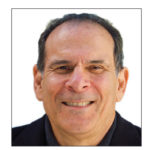
Joseph Jacobs is an independent art historian and private dealer living and working in New York. For over 35 years he was a museum curator and director, including curator of American Art at the Newark Museum, and Director of the Oklahoma City Art Museum. He has received many international awards for his exhibitions, for art purchases and for assembling major museum collections Mr. Jacobs has written numerous books and exhibition catalogues including co-authoring Janson’s History of Art, The Western Tradition and has published articles in major art magazines, including Art in America, Art & Antiques, and Arts. A leading art expert, Mr. Jacobs has served on the vetting committee for most major art fairs in America, including the International Fine Art Fair in New York and the Palm Beach Art & Antique Fair. In recent years, he has been a professional private dealer, assisting collectors with all aspects of collecting, including buying, selling, appraising.
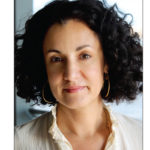 Svetlana Mintcheva is director of programs at the National Coalition Against Censorship, a 39-year old alliance of U.S.national non-profit organizations. She is the founding director of NCAC’s Arts Advocacy Program, the only U.S. national initiativedevoted to the arts and free expression today. Dr. Mintcheva has written on emerging trends in censorship, organized public discussions and mobilized support for individual artists. She is the co-editor of Censoring Culture: Contemporary Threats to Free Expression (New Press, 2006). An academic as well as an activist, Dr. Mintcheva has taught literature and critical theory at the University of Sofia, Bulgaria and at Duke University, NC from which she received her Ph.D. in critical theory in 1999. She teaches part-time at New York University. Her current research focuses on ethics, censorship and the notion of “offense.”
Svetlana Mintcheva is director of programs at the National Coalition Against Censorship, a 39-year old alliance of U.S.national non-profit organizations. She is the founding director of NCAC’s Arts Advocacy Program, the only U.S. national initiativedevoted to the arts and free expression today. Dr. Mintcheva has written on emerging trends in censorship, organized public discussions and mobilized support for individual artists. She is the co-editor of Censoring Culture: Contemporary Threats to Free Expression (New Press, 2006). An academic as well as an activist, Dr. Mintcheva has taught literature and critical theory at the University of Sofia, Bulgaria and at Duke University, NC from which she received her Ph.D. in critical theory in 1999. She teaches part-time at New York University. Her current research focuses on ethics, censorship and the notion of “offense.”
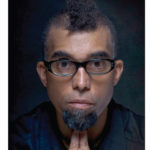 Dread Scott makes revolutionary art to propel history forward working in a range of media including performance, photography, screen printing, video, installation and painting. Dread’s art has been exhibited at many galleries and museums including the Whitney Museum of American Art, MoMA PS1, the Contemporary Art Museum Houston, The Walker Art Center and the Pori Art Museum, Finland, and the Brooklyn Academy of Music presented his performance Dread Scott: Decision. His work is in the collection of the Whitney Museum of American Art, the New Museum of Contemporary Art (NY) and the Akron Art Museum (OH). Dread is a recipient of awards from Creative Capital Foundation, Pollock-Krasner, New York Foundation for the Arts, and a Mid Atlantic/NEA Regional Fellowship in Photography. He has been written about in The New York Times, Art In America, ArtNews, ArtForum, Art21 Magazine, Time, The London Guardian and several other newspapers, magazines and books and has appeared on numerous tv and radio shows.
Dread Scott makes revolutionary art to propel history forward working in a range of media including performance, photography, screen printing, video, installation and painting. Dread’s art has been exhibited at many galleries and museums including the Whitney Museum of American Art, MoMA PS1, the Contemporary Art Museum Houston, The Walker Art Center and the Pori Art Museum, Finland, and the Brooklyn Academy of Music presented his performance Dread Scott: Decision. His work is in the collection of the Whitney Museum of American Art, the New Museum of Contemporary Art (NY) and the Akron Art Museum (OH). Dread is a recipient of awards from Creative Capital Foundation, Pollock-Krasner, New York Foundation for the Arts, and a Mid Atlantic/NEA Regional Fellowship in Photography. He has been written about in The New York Times, Art In America, ArtNews, ArtForum, Art21 Magazine, Time, The London Guardian and several other newspapers, magazines and books and has appeared on numerous tv and radio shows.


